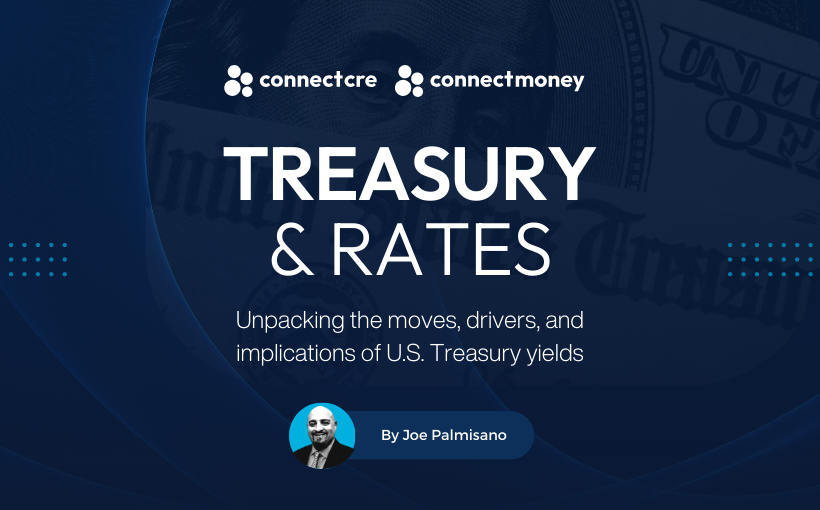**US Treasuries Shaken by Rising Tariff Fears and Basis Trade Unraveling**
The implementation of a new U.S. tariff regime has upended investor expectations and introduced significant uncertainty into global financial markets. While the immediate market reactions have been sharp, they are not irrational. Investors are responding prudently to shifting risks, especially in light of concerns around rising inflation, weakening growth, and uncertainty surrounding the Federal Reserve’s next moves—all of which increase the potential threat of a recession.
**Impact on Bond Markets**
The recent market volatility has highlighted the delicate balance in fixed-income investing. While U.S. Treasuries offer relative safety, they also carry price risks if yields rise. The Federal Reserve, led by Chair Jay Powell, has so far shown reluctance to react prematurely, signaling a wait-and-see approach to understand the full economic impact of the tariffs before taking further steps. This uncertainty has left markets prone to more swings.
Market expectations have shifted rapidly. Investors now anticipate the Fed could lower interest rates by at least 100 basis points this year—likely in four 25 basis-point increments starting in June. Prior to the tariff announcement, traders were pricing in only 75 basis points of rate cuts.
Despite some economic indicators flashing warning signs of a possible slowdown, the high-yield bond market appears unconcerned. According to analysts at Société Générale, high-yield credit spreads—currently below 4%—are pricing in a 0% probability of a recession. Historically, the U.S. has never entered a recession with spreads at these low levels.
Contrast this view with other asset classes. Société Générale’s high-frequency Bayesian model indicates the following approximate recession probabilities:
– VIX volatility index: 81%
– Short-term interest rate markets (Treasuries, TIPS, swaps): 52%
– Manufacturing indicators: 41%
– MOVE index (bond market volatility): 16%
– Year-over-year profits: 15%
– U.S. GDP: 9%
– Aggregate credit spreads: 3%
Federal Reserve branches provide mixed views as well. The New York and St. Louis Fed GDP Now estimates show a sub-10% chance of recession, while the Atlanta Fed, using a gold-adjusted GDP metric, indicates a 73% likelihood.
Despite the risks, the credit strategy team remains cautiously optimistic. Structural changes in asset markets may limit credit spread widening compared to previous downturns. However, history suggests that if growth slows significantly, credit markets may be the least prepared.
**Market Volatility on the Rise**
In response to the new tariff regime, investors initially fled to safe-haven assets such as U.S. Treasuries and defensive stocks, notably in the healthcare sector. The yield on the 10-year Treasury fell below 4% for the first time since October 2024, declining over 90 basis points since its peak in January.
However, the bond market soon experienced significant turmoil. A major selloff in government bonds was triggered, partly driven by the unwinding of leveraged “basis trades”—a strategy that exploits price differences between Treasury cash markets and futures. This dislocation pushed the spread between 10-year Treasury yields and swap rates to a record 64 basis points, highlighting extraordinary stress in arbitrage markets.
The MOVE index, a bond market volatility measure similar to the equity market’s VIX, surged to 140%—its highest level since May 2023—representing a nearly 40% increase for the year.
Despite the volatility, fixed-income assets have performed well in 2025. U.S. Treasuries in the 10- to 20-year maturity range and inflation-protected bonds are leading with over 3% gains year-to-date, surpassing the broader bond benchmark, up 2.1%. In contrast, the Dow Jones Industrial Average is down more than 10% (correction territory), and the Nasdaq has declined nearly 21%, entering a bear market. This divergence underscores a flight to safety amid mounting concerns about the broader economic outlook.
Ed Al-Hussainy, rates strategist at Columbia Threadneedle Investments, noted that “the market is betting that recession risks and the tightening of financial conditions will force the Fed to cut aggressively.”
**The Tariff Effect: Growth and Inflation Risks**
Even before the tariffs were implemented, data suggested that U.S. economic growth was beginning to slow. Meanwhile, inflation has been persistently above the Fed’s 2% target. The addition of tariffs complicates the picture by simultaneously dampening growth and adding upward pressure on prices—raising fears of stagflation, where slow growth and high inflation occur together.
The Biden administration’s firm stance on tariffs suggests this uncertainty may persist, disrupting traditional forecasting models. As a result, both the Federal Reserve and investors must remain highly responsive to new data and potential shifts in policy direction.
**The Fed’s Balancing Act**
The current macroeconomic backdrop is posing a significant challenge to the Fed. Traditionally, monetary policymakers prioritize either inflation control or economic growth, depending on which presents the greater risk. Today, however, both areas are flashing warning signals. Slowing growth and sticky inflation make it difficult to set a clear policy course.
Futures markets imply a high probability—near certainty—of a rate cut at the June Fed meeting. That said, the nearer-term May 7 meeting is likely to see no action, with policymakers eager to collect more economic data.
**Stagflation: An Emerging Threat**
Analysts are increasingly weighing the risk of a “mini stagflation” environment. According to BCA Research’s Dhaval Joshi, the U.S. economy is currently supply-constrained, with labor demand outpacing supply by approximately 1.7 million workers. The 4.2% unemployment rate remains below the 4.6% job vacancy rate, reducing the chances of a typical demand-side recession but bolstering the case for stagflation.
In this scenario, the 10-year Treasury yield could remain range-bound between 3.50% and 5.00%, as investors weigh the need for safety against inflation risk. A more severe “supply-driven recession” could also emerge if labor supply diminishes sharply—a situation that would result in the annual loss of more than 2.6 million jobs, far surpassing the 1.5% annual labor productivity growth rate. In such a case, the Fed may be hesitant to lower rates further, capping bond market upside.
**Market Outlook and Investment Strategy**
Going forward, if economic activity continues to soften while inflation eases, the conditions will be in place for the Fed to reduce interest rates, pushing bond yields lower. However, if inflation persists despite a slowdown in growth, the Fed could delay or limit rate cuts—pressuring bond prices as yields adjust for inflation risk.
Currently, the 10-year Treasury yield is reflecting these crosscurrents. For investors, longer-dated Treasuries and inflation-protected securities offer a haven but come with the need for continued vigilance. Any surprises in inflation or a sharper-than-expected decline in economic activity could quickly alter market dynamics.
The path ahead is undeniably complex. With persistent policy uncertainty from the federal government and a cautious Federal Reserve, investors should brace for a volatile and unpredictable market environment in the months ahead.




